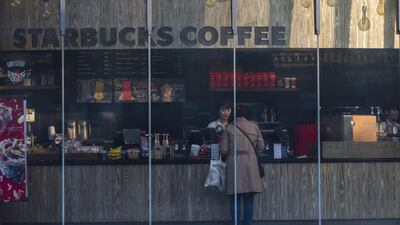Starbucks sees China surpassing the US as its largest market within a decade as it counts on the country’s affluent consumers to offset stagnant growth in the rest of the world.
Ramping up its focus on China, Starbucks is opening its biggest cafe in the world in Shanghai on Wednesday. The 30,000 square-feet store - about half the size of a football pitch - is part of upscale moves championed by founder and chairman Howard Schultz. Customers at the cavernous new store on the famous West Nanjing Road shopping strip can watch beans being roasted, sample high-end brews and use a Starbucks augmented reality digital app to interact with the store.
The chief executive Kevin Johnson is targeting the Seattle-based company’s fastest-growing market as it searches for ways to kick-start sluggish global sales after saturating the US with lattes and cappuccinos. Three years after Starbucks opened its first Roastery on its home turf, Starbucks is finally testing the idea in China, where it currently has 3,000 stores.
“It’s obvious to us that the holding power of China for Starbucks is going to be much more significant than the holding power of the US," Mr Schultz said in Shanghai to unveil the new cafe. He said China is on course to be the company’s largest market in less than a decade.
______________
Read more:
Communist Hanoi gets its first McDonald's
Ghana wakes up to the potential of coffee
______________
China is becoming crucial for Starbucks. Same-store sales gained 8 per cent in China during the most recent quarter, compared with 2 per cent globally. Revenue from the Asia-Pacific region accounted for almost 15 per cent of Starbucks’ revenue for the fiscal year ended in October. That’s up from 5.5 per cent five years earlier.
Starbucks expanded its investment in China in July, when it announced plans to buy out the partners in its east China joint venture. The company agreed to acquire the remaining 50 per cent of the business in a US$1.3 billion transaction, giving it ownership of about 1,300 cafes in Shanghai and the Jiangsu and Zhejiang provinces. Starbucks, which says it is opening a store every 15 hours in China, plans to have 5,000 cafes on the mainland by 2021.
Starbucks is betting China’s hunger for top-end luxury goods is transferable to coffee. A standard latte at the coffee chain is already pricier than fresh brews at many local cafes in Shanghai. The demand for premium products - from autos to yogurt - is gaining traction as an increasing number of Chinese families cross the income threshold to become affluent.
“Chinese consumers, especially the younger generation, are looking for things more quality-driven, more unique, that speaks to who they are,” said Jack Chuang, a Shanghai-based partner at OC&C Strategy Consultants who has studied the Chinese coffee market. “For coffee, there’s a certain kind of ‘in-the-know’ from consumers who seek out these good boutique shops.’’
Starbucks has said it plans other Roastery cafes in New York, Tokyo and Italy. The concept is part of a broad push to make Starbucks more upscale that includes a line of premium coffee called Reserve and cafes to showcase the new brand.
Still, roll out has been slowed by high construction costs and trouble finding suitable real estate.

